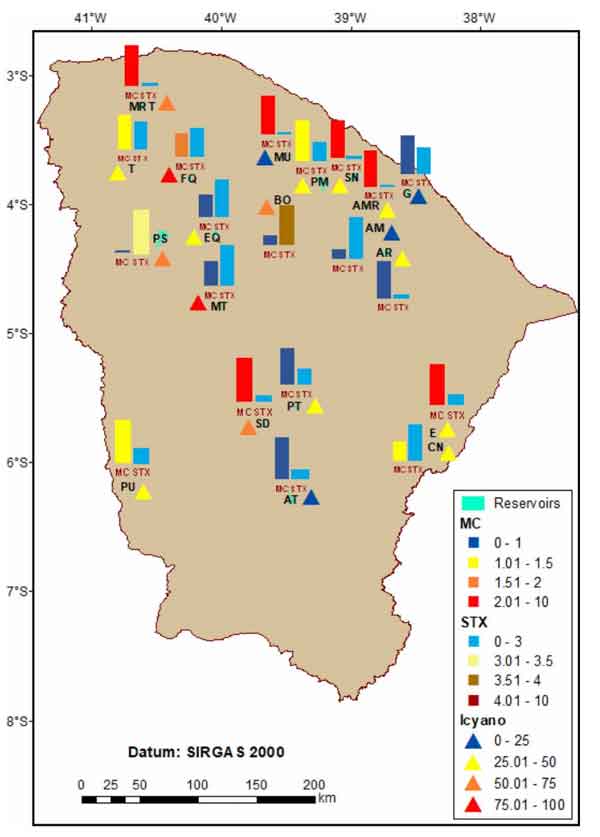
Citation
Barros, M. U.G., J. I.R. Leitão, T. R.B.T. Aranha, S. Simsek, R. P. Buley, E. G. Fernandez-Figueroa, M. F. Gladfelter, A. E. Wilson, and J. Capelo-Neto. 2020. Icyano: A cyanobacterial bloom vulnerability index for drinking water treatment plants. Water Supply 20(8):3517-3530.
Abstract
Managing freshwater systems has become a challenge for global water utilities given that cyanobacterial blooms have been increasing in frequency and intensity. Consequently, a water quality index that uses conventional measurements to assess toxic cyanobacterial hazards and guide the selection of proper treatment technologies could benefit water resource managers about water quality parameters routinely analyzed in line with environmental changes. An index model, called Icyano, showed that chlorophyll-a, cyanobacterial concentration, and total nitrogen were most important for the index. All reservoirs classified as good by Icyano used direct filtration water treatment technology. Many of the medium Icyano-classified reservoirs used a pre-treatment unit followed by a direct filtration unit. Two reservoirs that were classified as bad or very bad have been utilizing pre-treatment þ direct filtration or a complete cycle technology, respectively. As the Icyano index increases, water treatment plants should switch from direct filtration to using a pre-treatment to improve finished water quality. Findings from this project suggest that the direct filtration technology initially used in water treatment plants is not capable of meeting the current water quality guidelines in reservoirs that contain adverse water quality conditions, mostly related to an increase in toxic cyanobacterial blooms. As such, based on our findings, we recommend prioritizing financial resources towards pre-treatment technology or changes to more advanced technologies when Icyano index values increase.